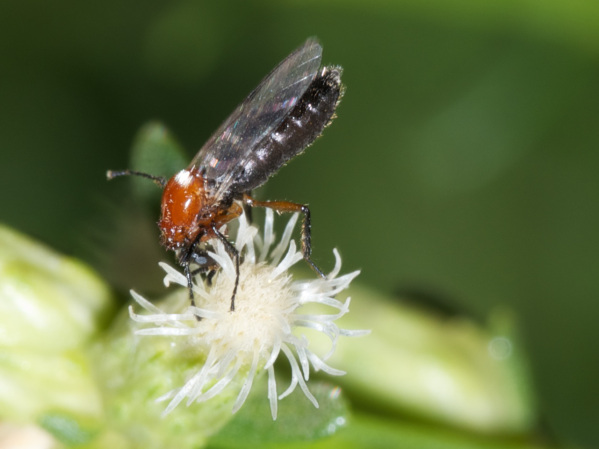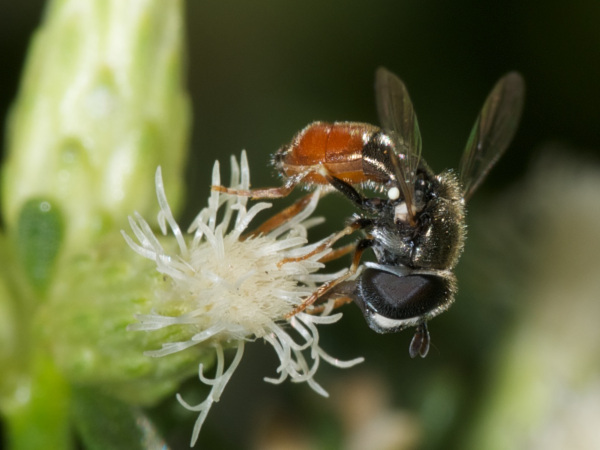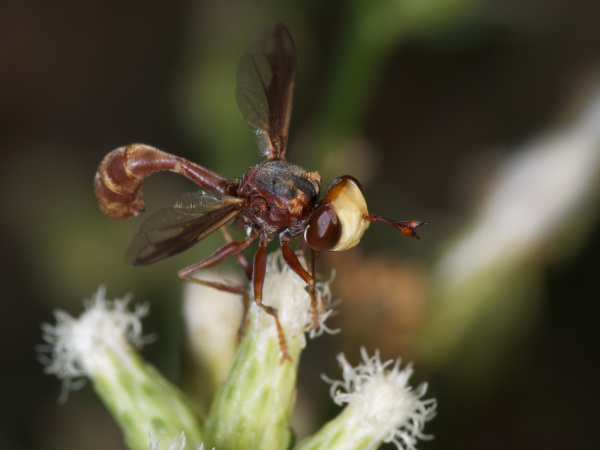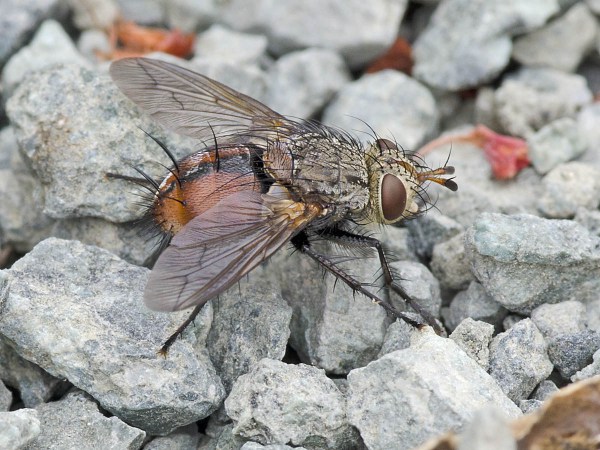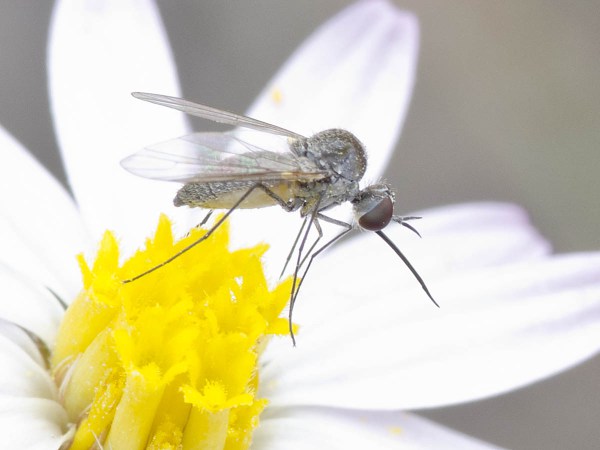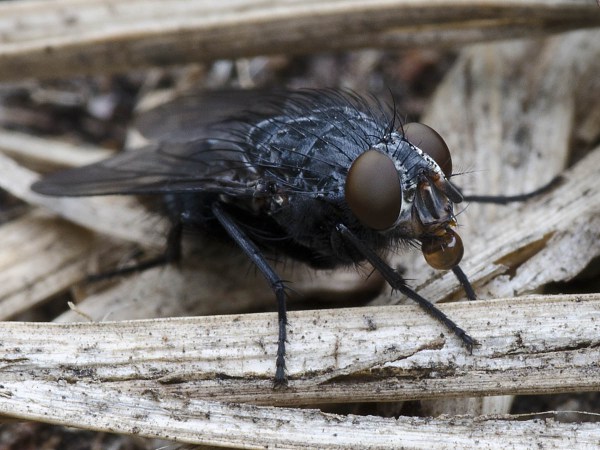Actually we are farther in than 3 days. We are staying in a town called Monte Negro, and have 2 collecting sites: one about 10 km from here, and one about 50 km from here.
On day 3, we went to the 50 km site for the first time. It was seething with insects, from butterflies and uraniid moths to stingless bees and higher flies. We put up 3 of our Townes style Malaise traps, while my colleague, Dalton, and his 2 students put up a huge Gressitt-style, double headed trap. Instantly, this giant black trap became a drawing card for the local insect population. The trap was literally heaving with all the insects inside it and coating the outer surface. Rather than wait for the insects to possibly fly into the collecting bottles, Dalton swept them with an insect net. He made impossibly huge collections of tachinids, syrphids, strats, and myriads of smaller flies.

Dalton sweeping out his trap
I sat down beside the trap, and took a few photos without moving; you can see the diversity of fabulous larger flies here in the following photos.

syrphid fly

for Chris Raper - how is this for tachinid density?

tachinid fly

another tachinid fly

yet another tachinid fly

a final tachinid fly
It is unusual to see such overwhelming diversity, but sometimes it happens. We went back to the same site yesterday and all of our traps were stuffed full to the top, mostly with unwanted Lepidoptera. These we had to laboriously remove from the samples to find the more interesting (to us) material, a process that takes hours upon hours.
As for phorids, we found lots associated with ants, but the best phorid so far was in a Malaise trap sample. The attached photo isn’t the greatest, but it is the best I could do in the field with the fly less than 1 mm long. It is a male Brachycosta, the first I have seen.

tiny male of Brachycosta
Next post: a new discovery in ant decapitating fly behavior.
